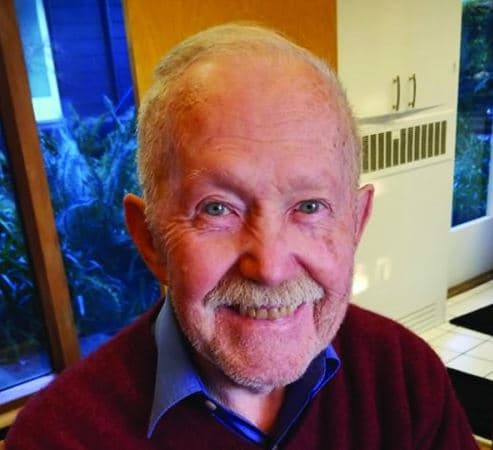8 November 1932 – 28 December 2021
Buford was born on November 8, 1932, in Memphis, Tennessee, to Eva Tankersley Dupuy and Paul Buford Price, Sr. Marianna, Arkansas, was where he spent his early years. When Buford began junior high school, the family relocated to Lexington, Kentucky. He obtained a scholarship to Davidson College in North Carolina after graduating from high school in 1948, and he graduated summa cum laude. Buford was then awarded a scholarship at the University of Virginia’s Physics Department. In June 1958, he got his PhD and married Jo Ann M. Baum, a graduate student at the University of Virginia’s Graduate School of Foreign Affairs. In August, he received word that he had been awarded a Fulbright Scholarship to conduct research at the University of Bristol’s H. H. Willis Physics Laboratory. He and Jo Ann relocated to England later that year, where he was given a National Science Foundation Fellowship to do research at Cambridge University’s Cavendish Laboratory the next year. Buford was hired at the General Electric Research Laboratory in Schenectady, New York, in the fall of 1960. He, Jo Ann, and the rest of the family relocated to Niskayuna, New York, where they spent the following nine years. There were brief family trips to the Physics Department at UC Berkeley (1963) and the Tata Institute of Fundamental Research in Mumbai, India to do research (1965-66). Buford was given a seat at UC Berkeley’s Department of Physics in 1969. In September, he, Jo Ann, and the rest of the family relocated to Berkeley, where they have remained since. Short and extended sabbaticals in Germany, Japan, Italy, and Switzerland were supported by Guggenheim and Miller prizes.
Buford was a physics professor at UC Berkeley until 2002, when he retired. From 2002 till his death in 2021, he was a Professor at the Graduate School. Buford served in a number of important leadership positions at Berkeley. From 1979 to 1985, he served as Director of the Space Sciences Laboratory, Chairman of the Physics Department from 1987 to 1992, and Dean of Physical Sciences from 1992 to 2001.
His scientific contributions spanned a wide range of subjects. He invented the nuclear track-etch technique at General Electric, which is still used in geology, geophysics, anthropology, high-energy nuclear physics, exotic radioactivity, planetary research, and high-energy astrophysics, as well as for commercial purposes. He was one of the first scientists to examine lunar samples returned by the Apollo astronauts, and he went on to build cosmic-ray detectors that were eventually installed on the Russian Space Station. He was a founding member of the AMANDA collaboration, which subsequently became Ice Cube, the high-energy neutrino observatory buried beneath the South Pole’s polar ice. Glaciology, paleoclimatology, and the study of extremophile microorganisms living in Antarctic ice have all benefited from this partnership. Buford was elected to the renowned National Academy of Sciences in 1975 as a consequence of his early work, and his scientific career spanned more than five decades, allowing him to contribute to a variety of subjects.
Buford’s extremely collaborative approach to research resulted in multiple generations of students who went on to successful scientific careers. He constantly encouraged his pupils and associates to pursue their own interests and provided significant assistance for their professional growth. Buford was a lovely coworker, peer, and mentor to those who worked with him.
P. Buford Price, III (Bo), his spouse Cecilia Bartolucci, their children Lavinia and Eric of Munich, Germany; Heather A. Price, her daughter Haley Dixon of Berkeley; Pamela M. Wright (Pam), her spouse Peter E. Wright, their children Audra and Cory of Dallas, Texas; Alison P. James (Ali), her spouse Matthew L. James, their children Alec and Nick of Millbrook, New York; Alison P. James ( Buford’s mother and father, as well as his brother Charles Everett Price and his and Jo Ann’s young son Billy, predeceased him.
Buford was a member of the American Institute of Physics and the Bohemian Club, in addition to the National Academy of Sciences. He had a long and successful career, and he made an indelible influence on many people’s lives, both professionally and socially. His glistening eyes and engaging grin will stay with us for a long time. After Covid permits us to assemble, a celebration of Buford’s life will be conducted. Donations to the Alzheimer’s Association can be donated in Buford’s honor.
(For more information, see the Niels Bohr Library and Archives and the American Institute of Physics’ Physics History Network.)


